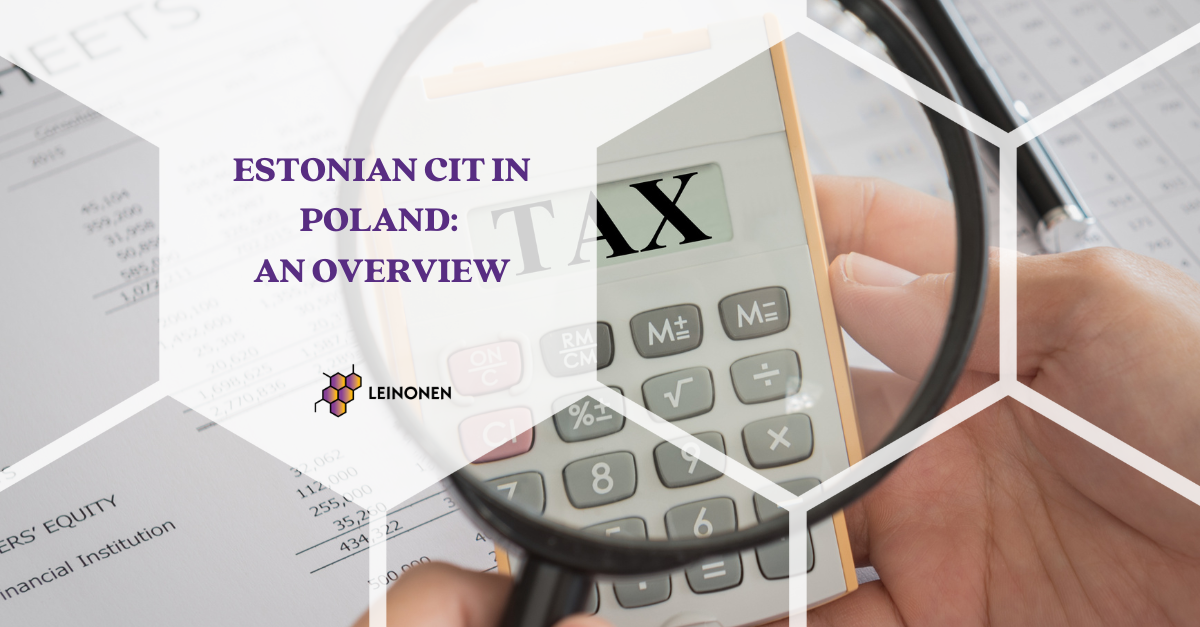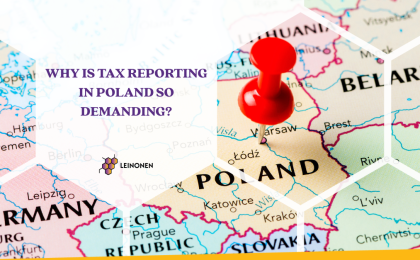The Estonian corporate income tax (CIT) model, also known as the “Estonian CIT,” was introduced in Poland on January 1, 2021. This new taxation system is an alternative to the standard CIT regime and aims to stimulate investments in Polish small and medium enterprises (SMEs). Here’s an overview of how the Estonian CIT works in Poland:
The core principle of the Estonian CIT is that companies do not pay income tax on their retained earnings until they distribute profits to shareholders. This allows businesses to reinvest their profits without an immediate tax burden. The tax is only due when profits are distributed as dividends, or used to cover losses from previous years.
However, the Polish version of the Estonian CIT has some key differences from the original Estonian model:
- Eligibility Requirements: To qualify for the Estonian CIT, companies must meet several conditions, including being owned solely by natural persons, having a minimum share capital, and maintaining specific accounting records.
- Higher Tax Rates: While the standard CIT rate in Poland is 19%, the Estonian CIT rates are higher – 10% for small taxpayers and startups, and 20% for other companies.
- Limited Tax Preferences: Companies under the Estonian CIT cannot benefit from certain tax preferences, such as the IP Box regime or R&D relief.
- Minimum Period: Once opted for, the Estonian CIT must be applied for at least four consecutive tax years.
Advantages and Drawbacks
The main advantage of the Estonian CIT is the ability to defer tax payments on retained earnings, providing more cash flow for investments and growth. It also simplifies tax accounting by basing the tax calculation solely on accounting data.
However, the higher tax rates, limited tax preferences, and strict eligibility criteria may offset some of the potential benefits, especially for larger companies. Additionally, the lack of established practices and interpretations from tax authorities creates uncertainty around the application of the new regime.
The main benefits of the “Estonian CIT” model for small and medium enterprises (SMEs) in Poland are:
- Deferral of Corporate Income Tax (CIT): SMEs under the Estonian CIT do not pay CIT on retained earnings until they distribute profits as dividends. This allows them to reinvest profits back into the business without an immediate tax burden, improving cash flow and liquidity.
- Fostering Investments and Growth: By not taxing retained earnings, the Estonian CIT incentivizes SMEs to invest their profits into business expansion, innovation, and productivity improvements instead of distributing dividends.
- Simplified Tax Compliance: Companies under the Estonian CIT do not need to maintain separate tax records for CIT purposes. The tax is calculated based on accounting data when profits are distributed, reducing administrative costs.
- Employment Generation: The government expects the Estonian CIT to contribute to the creation of around 120,000 new jobs by enabling SMEs to reinvest more profits into growth and development.
- Crisis Resilience: Retaining profits without taxation can provide SMEs with a financial buffer during economic downturns, improving their crisis resilience.
However, it’s important to note that the Polish version of the Estonian CIT has stricter eligibility criteria and higher tax rates compared to the original Estonian model. SMEs must meet specific conditions related to ownership structure, revenue limits, employment levels, and investment commitments to qualify for and remain under the Estonian CIT regime in Poland.
There are several limitations and drawbacks to the “Estonian CIT” model as implemented in Poland compared to the original Estonian version:
- Stricter Eligibility Criteria: To qualify for the Estonian CIT in Poland, companies must meet specific conditions related to ownership structure, minimum share capital, accounting records, and investment commitments. These requirements are more complicated than in Estonia.
- Higher Tax Rates: While Estonia has a flat 20% tax rate on distributed profits, Poland applies higher rates – 10% for small taxpayers/startups and 20% for other companies. This reduces the tax advantage compared to Estonia.
- Limited Tax Preferences: Companies under the Estonian CIT in Poland cannot benefit from certain tax preferences like the IP Box regime or R&D relief. This makes it less attractive for innovative or R&D-focused companies.
- Minimum Application Period: Once opted for the Estonian CIT, companies must apply it for at least four consecutive tax years in Poland. This reduces flexibility compared to Estonia.
- Uncertainty and Lack of Established Practices: As it is a new regime, there is uncertainty around its application and interpretation by tax authorities in Poland. The lack of established practices creates challenges for businesses.
- Restructuring Limitations: Companies that underwent certain restructuring activities like mergers or divisions face additional restrictions on using the Estonian CIT for a period of time.
- Preliminary Tax Adjustments: When transitioning to the Estonian CIT, companies must make preliminary tax adjustments and may face deferred tax liabilities if they exit the regime before 4 years.
While the Estonian CIT aims to stimulate investments for SMEs in Poland, the added complexities, higher rates, and limited applicability compared to the original Estonian model have raised concerns among businesses about its real benefits.
If you have any questions regarding company taxation in Poland, contact Leinonen.





